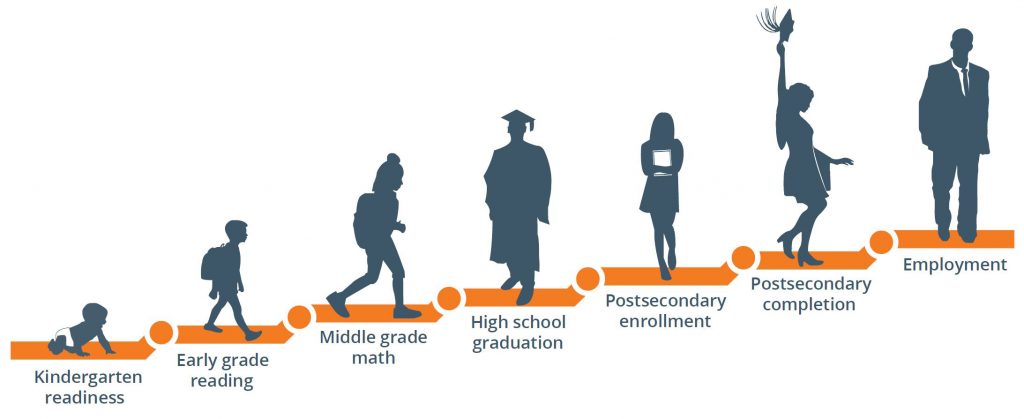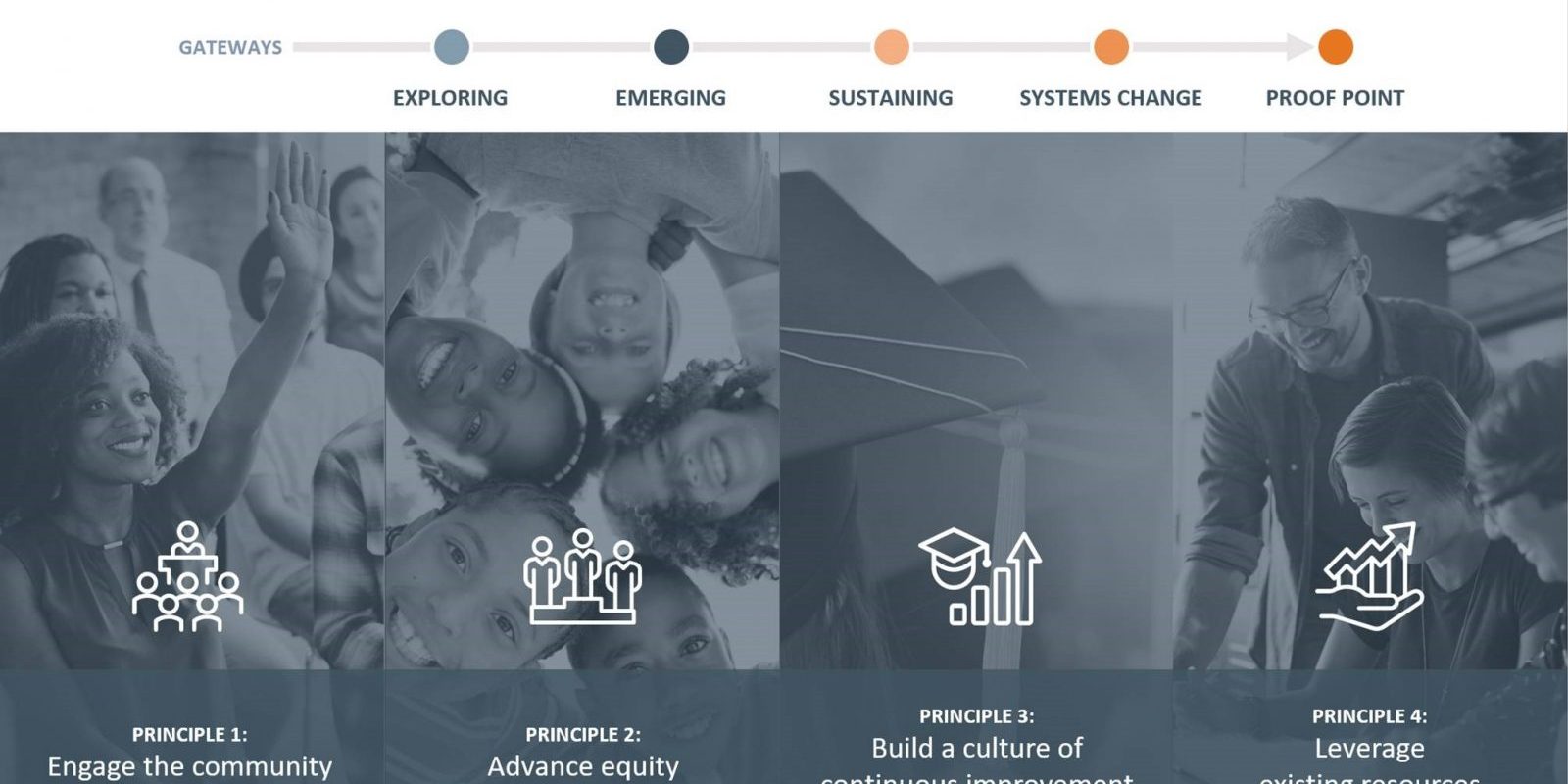In partnership with members of the Cradle to Career Network, StriveTogether has revised the Theory of ActionTM, our guiding framework for getting better results for kids and families. This marks the fourth time we have updated our Theory of ActionTM based on insights from communities from across the country. That’s why we consider it a living document — because all of our network members are constantly learning, adapting and charting new territory in pursuit of real, lasting change for every child.
The StriveTogether Theory of ActionTM is the cornerstone of our approach. Built on lessons from network members over the years, our nationally recognized Theory of ActionTM helps communities build and sustain the civic infrastructure necessary to improve outcomes for kids. The rigorous standards and focus on results in our framework distinguish our approach from traditional collaboration and other collective impact approaches.
Community-based partnerships using the Theory of ActionTM as their road map to success follow four principles as they move from building a partnership to improving outcomes:
- Engage the community
- Advance equity
- Develop a culture of continuous improvement
- Leverage existing resources.
Partnerships reach different levels of progress as they advance through the Theory of ActionTM. In this new iteration, our framework now consists of six levels of progress, called gateways: exploring, emerging, sustaining, systems change, proof point and systems transformation. Within each of the six gateways, a series of quality benchmarks leads teams of people from different sectors through the steps of developing and sustaining a partnership. Meeting these milestones in the first five gateways puts a community on a path to systems transformation and improved economic mobility.
To date, 23 partnerships in the Cradle to Career Network have helped to shape this revised version. Based on what we learned from these interactions with network members and through an evaluation done by a third-party firm, Equal Measure, we added more rigor and an increased focus on equity to the first three gateways: exploring, emerging and sustaining. The lessons learned from the last decade of this work will help communities advance faster and farther.
Our new and sixth gateway, systems transformation, builds upon benchmarks in the earlier phases of partnership growth. Systems transformation focuses on equitable decision making, adjacent sector engagement, data for continuous improvement and policy change — all with an emphasis on equity.
Another cornerstone of StriveTogether’s approach is our cradle-to-career continuum: seven outcomes from kindergarten readiness through college and career. To reach the systems transformation designation, partnerships will have to:
- demonstrate improvement in four core indicators of the seven cradle-to-career outcomes
- show a reduction or elimination in four disparity gaps of the seven cradle-to-career outcomes
- demonstrate improvements in systems that foster more equitable outcomes
- show improvement in at least one adjacent sector outcome for families, youth or community residents

And, as clearly stated in our new strategic plan, we are striving to have at least 24 communities in the systems transformation gateway by 2023. That means 24 communities making a measurable difference in the lives of our most vulnerable kids by improving outcomes, closing gaps, changing systems and aligning education with other sectors like health care and housing.
In partnership with network members, we will continue to refine the Theory of ActionTM’s criteria in the coming months and years. As more communities meet benchmarks and get all the systems to work together — education, health care, housing and more — we can and will achieve better, more equitable outcomes for children and youth. Together, we move toward our ultimate goal of transforming the systems that shape opportunity for students and families in America.






